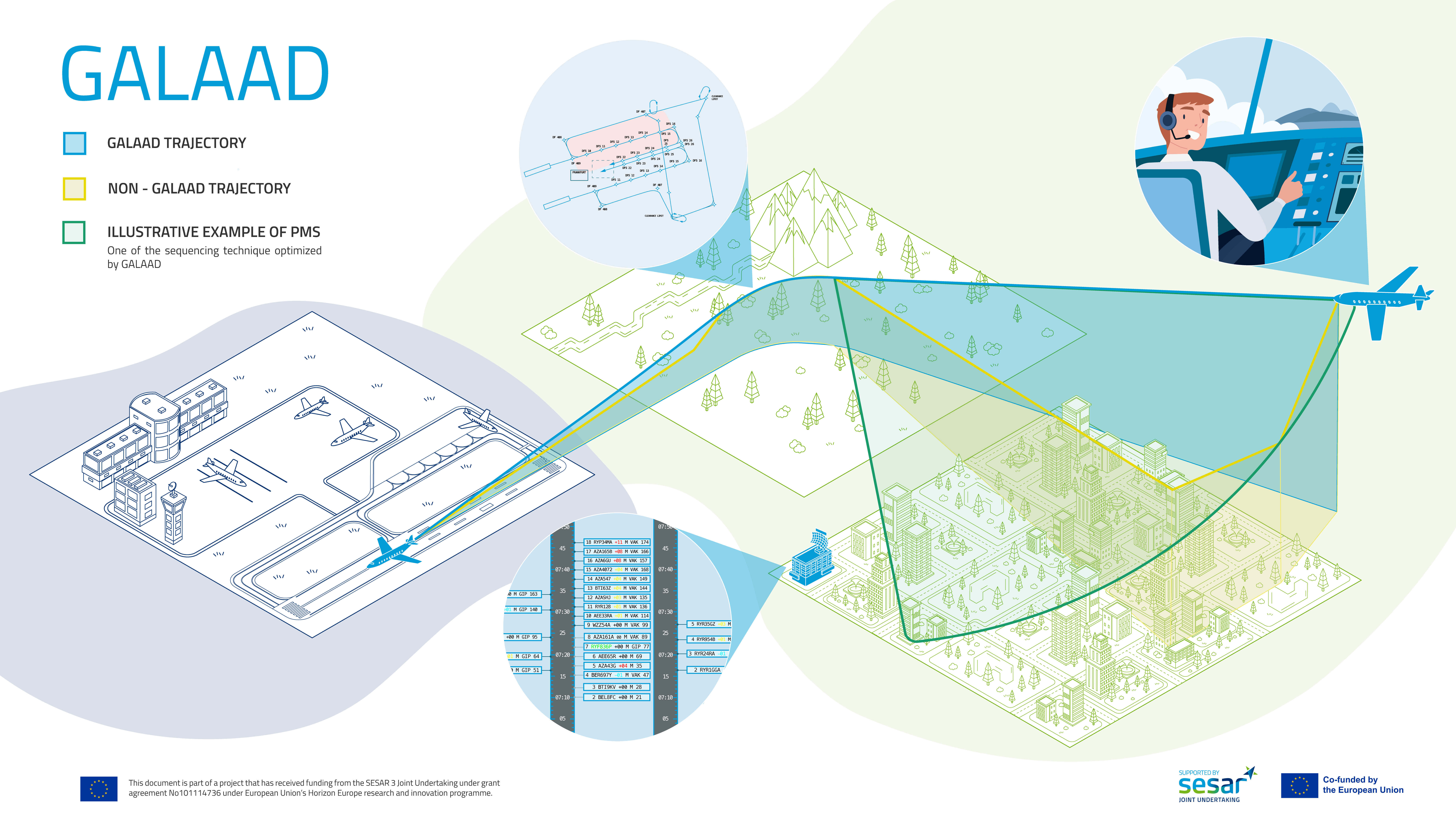By transitioning from rigid arrival procedures to a more dynamic system able to respond to local conditions, researchers with the SESAR JU GALAAD project hope to bring greater sustainability to air transport. The project has published a visual to illustrate their proposed concept.
The main goal of the project is to transition air traffic management (ATM) away from the rigid use of required navigation performance (RNP) arrival route structures towards a dynamic, more flexible approach to managing arrivals and departures.
To achieve this, the GALAAD project proposes a concept that will allow RNP route structures to be activated or deactivated depending on, for example, the time of day, for noise control purposes, or traffic demand.
This approach aims to avoid the use of complex route structures during periods of low demand, enabling agile responses to changes in operational conditions within the terminal area, such as traffic density, airspace availability, or environmental constraints.
Funded within the framework of Horizon Europe, the project focuses on two primary use cases: procedural dynamicity, where PBN route structures are activated or deactivated for specific time periods (operating regimes), and full dynamicity, where PBN route assignments are assessed on a flight-by-flight basis. It is anticipated that dynamically allocating arrival route structures among predefined procedures will offer various trade-offs between capacity and efficiency/environmental impact, depending on traffic demand.
This flexibility will enable air traffic control (ATC) to adjust constraints designed for high-traffic conditions in scenarios of lower traffic, resulting in improved fuel efficiency and environmental performance.
More about GALAAD:
https://sesarju.eu/projects/GALAAD
https://www.linkedin.com/company/galaad.com

